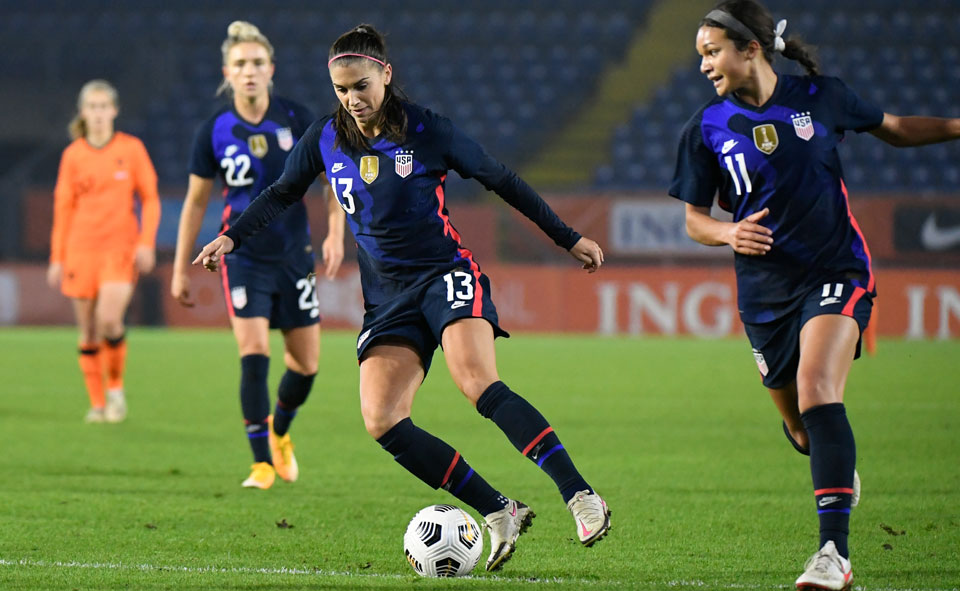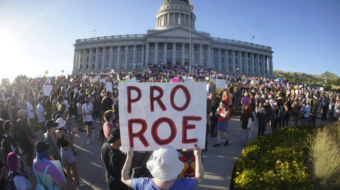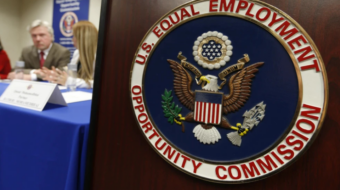
LOS ANGELES—Equal pay for equal work? Not yet for the medal-winning U.S. women’s soccer team.
But they’re going to get everything else they fought for in their long-running battle with the U.S. Soccer Federation, and the pay issue remains open, awaiting a trial next year.
In a settlement announced on Dec. 1, the federation, soccer’s ruling body, agreed to equalize hotel arrangements, staffing, travel, and practice and playing fields available to the women and to the U.S. men’s team.
All are important. For example, the women will now play on grass soccer fields, not Astroturf and its variants. Those fields, underlined by concrete, are hell on all players’ legs and knees. Grass is much more physically favorable to people’s bodies.
The women will also get equal promotion and support from USSF, although the women, who consistently win, just as consistently outdraw the men. Their 2015 women’s World Cup final against Japan was the highest-rated, most-viewed soccer telecast, men’s or women’s, ever.
But none of those items equal the huge pay difference between the two squads, in the men’s favor.
And that was the key point of the women’s class action sex discrimination suit against USSF, filed in federal court in Los Angeles on International Women’s Day in early 2019, Molly Levinson, spokeswoman for the women’s team said in a statement.
So the Dec. 1 agreement “doesn’t account for the central fact in this case that women players have been paid at lesser rates than men who do the same job,” she explained.
“We remain as committed as ever to our work to achieve the equal pay we legally deserve. Our focus is on the future and ensuring we leave the game a better place for the next generation of women who will play for this team and this country.”
Cindy Cone, the USSF president and a former national women’s team member, said her federation also wants to get to equal pay for the women, but added the women made one mistake in prior collective bargaining, by accepting a contract that emphasized other goals, and that the women also want retroactive equal pay for their past World Cup wins.
But in May, a federal judge in L.A., tossed out the equal pay part of the case, citing the women’s contract as the reason. That led to a Good Morning America retort from U.S. women’s team star forward Megan Rapinoe.
“The men’s contract was never offered to us and certainly not the same amount of money,” Rapinoe said then. The women knew “going into the negotiation” years before “that equal pay…anywhere close to your male counterparts is not on the table.”
Since the women’s team got a few million dollars for its 28 players while winning the World Cup, while the men got $66 million just for participating in the last Cup tournament, equality in that sum, via back pay, would bankrupt the U.S. Soccer Federation, Cone said.
In her Dec. 1 statement, Levinson reiterated Rapinoe’s point that USSF never offered an equal pay contract. The past USSF president, an older white man, was its lead bargainer then. After sexually insensitive remarks, he was later forced out of the job and replaced by Cone.
There’s one point left unsaid, however, in all the battles over equal pay for equal work: The unequal records of the two teams.
The U.S. women are international soccer’s version of the New York Yankees, only they’re even more dominant on the world soccer stage than the Yanks ever were in the World Series. In either the World Cup or the Olympics, each held every four years, though not in the same year, it’s an upset when the U.S. women lose a game.
The women medaled in every tournament from the first women’s World Cup in 1991 through the 2015 Cup. Most of the medals were gold. They finished fourth—no medal—in the 2016 Olympics, but rebounded with another World Cup title in 2019. It was their fourth straight.
The men are the opposite. They finished third out of 16 teams in the first World Cup, in 1930. Since then, they’ve rarely reached even the quarterfinal rounds. That’s the equivalent of being buried among baseball’s second-division losing teams. Their Olympic record is even worse.
The U.S. men’s soccer team is so inept they could remind fans of the infamous 1962 New York Mets. That’s the expansion team whose manager, the late Casey Stengel, once wondered: “Can’t anybody here play this game?”










